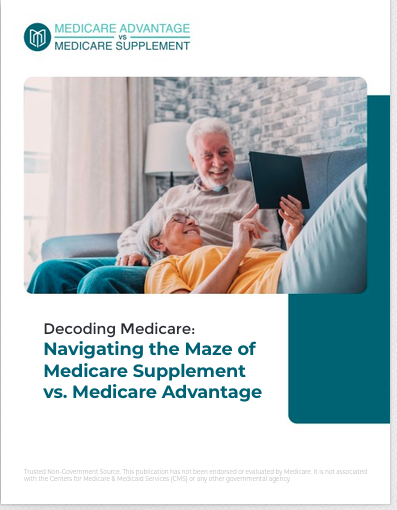Key Takeaways
- Medicare savings programs can significantly reduce healthcare costs for eligible individuals.
- Understanding the various Medicare savings programs helps beneficiaries make informed decisions about their healthcare.
Cutting Medicare Costs? Check Out These Savings Programs
Managing healthcare costs is a significant concern for many Medicare beneficiaries. Fortunately, there are various Medicare savings programs available to help reduce out-of-pocket expenses. This guide provides an overview of these programs, explaining how they work and who may be eligible.
What Are Medicare Savings Programs?
Medicare savings programs are initiatives designed to assist individuals with limited income and resources in paying for their Medicare costs. These programs can cover expenses such as premiums, deductibles, and coinsurance. The main types of Medicare savings programs include the Qualified Medicare Beneficiary (QMB) Program, the Specified Low-Income Medicare Beneficiary (SLMB) Program, the Qualified Individual (QI) Program, and the Qualified Disabled and Working Individuals (QDWI) Program.
Qualified Medicare Beneficiary (QMB) Program
The QMB program is designed to help low-income Medicare beneficiaries by paying for Medicare Part A and Part B premiums, deductibles, coinsurance, and copayments. To qualify for the QMB program, individuals must meet specific income and resource limits.
How to Apply for QMB
To apply for the QMB program, beneficiaries should contact their state’s Medicaid office. The application process typically involves providing proof of income, assets, and residency. Once approved, beneficiaries will receive a notice of eligibility and can start benefiting from the cost-saving features of the program.
Specified Low-Income Medicare Beneficiary (SLMB) Program
The SLMB program helps pay for Medicare Part B premiums for individuals with slightly higher incomes than those eligible for the QMB program. While it doesn’t cover deductibles or coinsurance, it still provides significant savings by covering the monthly premium for Medicare Part B.
SLMB Eligibility Requirements
To qualify for the SLMB program, applicants must meet income and resource limits set by their state. These limits are slightly higher than those for the QMB program, making SLMB accessible to more beneficiaries. Application procedures are similar to the QMB program, requiring documentation of income and assets.
Qualified Individual (QI) Program
The QI program also helps pay for Medicare Part B premiums but has a different funding structure. It’s funded by a limited federal grant, so applications are accepted on a first-come, first-served basis. This program is particularly beneficial for those who don’t qualify for Medicaid but still need assistance with their Medicare costs.
Applying for the QI Program
Due to the limited funding, it’s crucial to apply for the QI program as early as possible each year. Beneficiaries must contact their state’s Medicaid office to apply and provide necessary income and asset documentation.
Qualified Disabled and Working Individuals (QDWI) Program
The QDWI program is designed to help individuals who are under 65, disabled, and have returned to work. It helps pay for Medicare Part A premiums. To qualify, individuals must meet income and resource limits and not be eligible for Medicaid.
Steps to Apply for QDWI
Beneficiaries interested in the QDWI program should contact their state’s Medicaid office. The application process involves providing proof of income, assets, and work status. Once approved, the program can help significantly reduce Medicare Part A premium costs.
Additional Resources for Reducing Medicare Costs
Besides the primary Medicare savings programs, other resources can help beneficiaries manage their healthcare expenses. These include:
Extra Help with Prescription Drugs
The Extra Help program, also known as the Low-Income Subsidy (LIS) program, helps beneficiaries with limited income and resources pay for Medicare prescription drug costs. This program can cover premiums, deductibles, and copayments for Medicare Part D.
State Pharmaceutical Assistance Programs (SPAPs)
Some states offer SPAPs to help residents pay for prescription drugs. These programs vary by state in terms of eligibility and benefits, but they can provide significant savings for Medicare beneficiaries.
Medicare Part D Low-Income Subsidy (LIS)
The LIS program offers additional savings on Medicare Part D prescription drug plans. Eligibility is based on income and resource limits, and beneficiaries must apply through the Social Security Administration or their state’s Medicaid office.
How to Maximize Savings with Medicare Savings Programs
Understanding and utilizing Medicare savings programs can lead to substantial savings on healthcare costs. Here are some tips to help beneficiaries maximize their savings:
Stay Informed About Eligibility Requirements
Eligibility requirements for Medicare savings programs can change, so it’s essential to stay informed about the latest criteria. Regularly check with your state’s Medicaid office or visit the Medicare website for updated information.
Keep Accurate Records
Maintaining accurate records of your income, assets, and expenses can streamline the application process for Medicare savings programs. Ensure all documents are up-to-date and readily available when applying.
Apply Early
For programs like QI, which operate on a first-come, first-served basis, applying early in the year can increase your chances of receiving benefits. Mark your calendar to apply as soon as the application period opens.
Utilize Available Resources
There are numerous resources available to help you understand and apply for Medicare savings programs. These include your state’s Medicaid office, the Medicare website, and licensed insurance agents who can provide personalized assistance.
Common Questions About Medicare Savings Programs
What is the Difference Between QMB and SLMB?
The primary difference between QMB and SLMB is the level of coverage. The QMB program covers Medicare Part A and Part B premiums, deductibles, coinsurance, and copayments, while the SLMB program only covers Medicare Part B premiums.
Can I Be Enrolled in More Than One Medicare Savings Program?
No, beneficiaries can only be enrolled in one Medicare savings program at a time. However, if your financial situation changes, you may qualify for a different program.
How Often Do I Need to Reapply for Medicare Savings Programs?
Eligibility for Medicare savings programs is typically reviewed annually. You will need to reapply each year to continue receiving benefits. Be sure to update any changes in your income or assets during the reapplication process.
The Importance of Medicare Savings Programs
Medicare savings programs play a crucial role in helping low-income individuals afford necessary healthcare services. By covering costs such as premiums, deductibles, and coinsurance, these programs ensure that beneficiaries can access the care they need without facing financial hardship. Understanding the different programs and their eligibility requirements is essential for maximizing the benefits available.
Key Takeaways and Final Thoughts
Navigating Medicare costs can be challenging, but various savings programs are available to help. By understanding the eligibility requirements and application processes for programs like QMB, SLMB, QI, and QDWI, beneficiaries can significantly reduce their healthcare expenses. Additionally, exploring other resources like the Extra Help program and state pharmaceutical assistance programs can provide further savings.
For more detailed information about these programs, consider visiting the Medicare website or contacting a licensed insurance agent who can provide personalized guidance.
Contact Information:
Email: [email protected]
Phone: 2095559012










